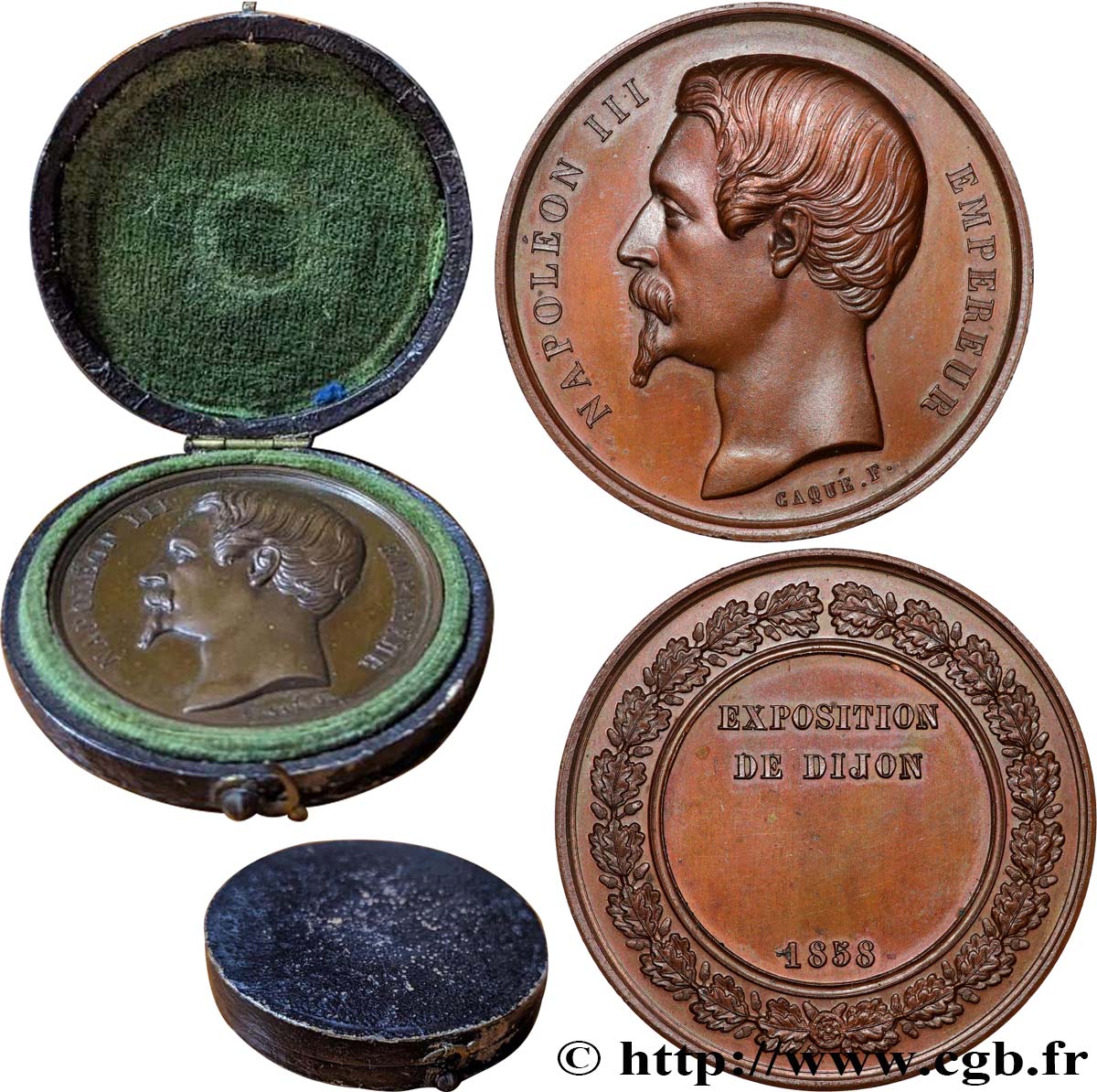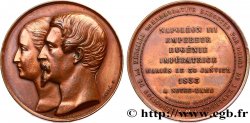Live auction - fme_872836 - SECOND EMPIRE Médaille, Exposition de Dijon
You must signin and be an approved bidder to bid, LOGIN TO BID. Accounts are subject to approval and the approval process takes place within 48 hours. Do not wait until the day a sale closes to register. Clicking on "BID" constitutes acceptance of the terms of use of cgb.fr private live auctions.
Bids must be placed in whole Euro amounts only. The sale will start closing at the time stated on the item description; any bids received at the site after the closing time will not be executed. Transmission times may vary and bids could be rejected if you wait until the last second. For further information check the Live auction FAQ
All winning bids are subject to a 18% buyer’s fee.
All winning bids are subject to a 18% buyer’s fee.
| Estimate : | 100 € |
| Price : | 52 € |
| Maximum bid : | 80 € |
| End of the sale : | 14 November 2023 16:32:03 |
| bidders : | 2 bidders |
Type : Médaille, Exposition de Dijon
Date: 1858
Mint name / Town : 21 - Dijon
Metal : copper
Diameter : 41 mm
Orientation dies : 12 h.
Engraver BARRE Albert Désiré (1818-1878)
Weight : 33,28 g.
Edge : lisse + main CUIVRE
Puncheon : main indicatrice (1845-1860) et CUIVRE
Coments on the condition:
Belle patine marron légèrement irisée, présentant quelques traces de manipulation. Petite usure sur certains reliefs. Des petits coups sur les bords de la tranche
Obverse
Obverse legend : NAPOLÉON III - EMPEREUR.
Obverse description : Tête nue de Napoléon III à gauche, signé : BARRE.
Reverse
Reverse legend : EXPOSITION / DE DIJON / 1858.
Reverse description : Légende en 3 lignes dans un médaillon entouré d’une couronne de chêne.
Commentary
Médaille non décernée, conservée dans un écrin marron à feutrine verte.
L’Exposition internationale de 1858 s'est déroulée dans la ville française de Dijon (Côte-d'Or) afin de promouvoir les Beaux-arts, l'industrie et l'agriculture. L'Exposition a été inaugurée le 8 juin 1858 par Jean-Baptiste Philibert Vaillant et s'est tenue jusqu'à septembre 1858 place d'Armes (actuelle place de la Libération) au cœur de la capitale des ducs de Bourgogne à l'initiative du maire de la ville Théodore Michel Vernier, président de la commission. Elle devait promouvoir les Beaux-arts, l'industrie et l'agriculture et a ainsi exposé objets et produits dans les salles de l'ancien palais des Ducs de Bourgogne et dans les annexes de la La place d'Armes, de la place du Théâtre et de la place des Ducs. Une valse pour piano La Dijonnaise a été spécialement écrite pour l'événement par madame Alexandre Bataille et dédiée aux membres de la commission de l'exposition.
L’Exposition internationale de 1858 s'est déroulée dans la ville française de Dijon (Côte-d'Or) afin de promouvoir les Beaux-arts, l'industrie et l'agriculture. L'Exposition a été inaugurée le 8 juin 1858 par Jean-Baptiste Philibert Vaillant et s'est tenue jusqu'à septembre 1858 place d'Armes (actuelle place de la Libération) au cœur de la capitale des ducs de Bourgogne à l'initiative du maire de la ville Théodore Michel Vernier, président de la commission. Elle devait promouvoir les Beaux-arts, l'industrie et l'agriculture et a ainsi exposé objets et produits dans les salles de l'ancien palais des Ducs de Bourgogne et dans les annexes de la La place d'Armes, de la place du Théâtre et de la place des Ducs. Une valse pour piano La Dijonnaise a été spécialement écrite pour l'événement par madame Alexandre Bataille et dédiée aux membres de la commission de l'exposition.








 Report a mistake
Report a mistake Print the page
Print the page Share my selection
Share my selection Ask a question
Ask a question Consign / sell
Consign / sell
 Full data
Full data















